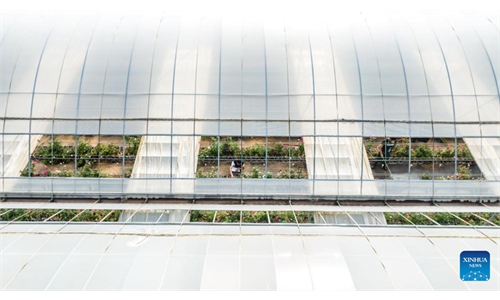China sends plateau barley and rapeseed to space with nation's first reusable satellite

The Shijian-19 is placed into its preset orbit via a Long March-2D carrier rocket that lifted off at 6:30 pm on September 27, 2024, from the Jiuquan Satellite Launch Center in Northwestern China. Photo: China National Space Administration
Some 16 varieties of highland barley and rapeseed totaling 520 grams have been sent into space for breeding experiments with the successful launch of China's first reusable satellite the Shijian-19, Xizang media reported on Saturday, noting that the move marks new progress in the construction of a key laboratory for plateau space breeding.
The Shijian-19 was placed into its preset orbit via a Long March-2D carrier rocket that lifted off at 6:30 pm on Friday from the Jiuquan Satellite Launch Center in Northwestern China, according to the China National Space Administration.
Space breeding utilizes extreme space environments such as microgravity and strong radiation to induce genetic mutations in the seeds. The seeds will be returned to Earth after a period of time, for the selection and breeding of new plant varieties. This process usually induces better-performing seeds.
The world's first key laboratory for plateau space breeding was established in Cona, Southwest China's Xizang Autonomous Region in May 2024 under the coordination of research teams in East China's Anhui Province and Northwest China's Shaanxi Province with the local Cona government. The lab is committed to contributing to the development of new agricultural productivity in Xizang and enhancing border security and prosperity, the Xizang Daily reported on Saturday.
This project is dedicated to space breeding work for local agricultural varieties in the plateau region, promoting the breeding research of local barley, Tibetan medicine, chili peppers, rapeseed, and other varieties. It also focuses on researching germplasm resources suitable for high-altitude, cold, and arid areas, including forage, ecological grass, Tibetan medicine, and fruits and vegetables.
Currently, the first phase of the plateau space forage selection and experimental base has been completed, with 30 acres planted with six varieties of space forage. As of early July this year, it has entered the stage of field management for experimental data monitoring. Subsequent research projects will be gradually established starting from 2025.
Global Times

